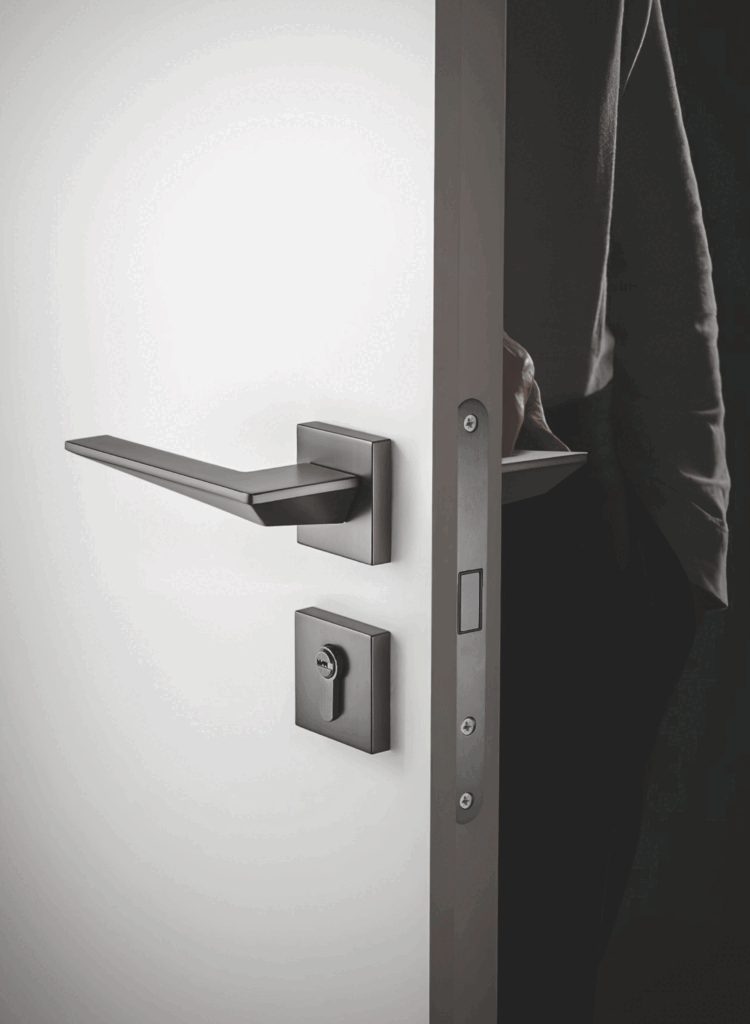Introduction: Overview of Door Lock Cylinders
In the realm of door hardware, door lock cylinders are a critical component that directly impacts the security, functionality, and ease of use of any locking system. Whether you are outfitting residential doors, commercial buildings, or high-security facilities, understanding the different types of door lock cylinders is essential for making informed decisions that meet the specific needs of your clients. As a seasoned professional in the door hardware industry, I’ve worked with a variety of clients, including door manufacturers, regional hardware brands, importers, and procurement managers for building material supermarkets, helping them select the best lock cylinders for their applications. In this article, we will delve into the various types of door lock cylinders, their security features, installation tips, and how to choose the right one to ensure optimal protection.
Types of Cylinders
Choosing the right type of cylinder is crucial to the overall performance of a door lock. Here are some of the most common types of door lock cylinders:
1. Euro Profile Cylinder

- Description: Euro profile cylinders are widely used across Europe and other parts of the world. They are characterized by their long, narrow shape and are commonly found in residential and commercial doors. These cylinders can be easily replaced or upgraded, making them a versatile choice for various applications.
- Application: Euro cylinders are often used in mechanical door locks and smart locks, making them suitable for both standard and high-security installations. They are popular in regions with a focus on security standards and ease of use.
2. Oval Cylinder

- Description: Oval cylinders, similar in function to Euro cylinders, have a distinct oval shape. They are less common but are still widely used in certain regions and applications, particularly in Scandinavian countries and the UK. Oval cylinders offer similar flexibility in terms of replacement and upgrades.
- Application: These cylinders are often used in mechanical door locks in areas where oval profiles are standard. They are suitable for both residential and commercial use, particularly where a unique design or historical style is preferred.
3. KIK (Key-in-Knob) Cylinder

- Description: KIK cylinders are a common choice for cylindrical locks, often found in the knob or lever of a door. These cylinders are compact and can be easily rekeyed or replaced without removing the entire lockset, making them a convenient option for many users.
- Application: KIK cylinders are widely used in residential and commercial settings, particularly in markets like North America, where cylindrical locks are prevalent. They are ideal for applications requiring quick and easy maintenance.
4. Mortise Cylinder

- Description: Mortise cylinders are a more robust option, often used in commercial and institutional settings. These cylinders are installed within the door itself, providing a high level of security. They are available in a variety of lengths to accommodate different door thicknesses.
- Application: Mortise cylinders are commonly used in high-security environments such as office buildings, hotels, and schools. Their durability and security features make them ideal for areas that require heavy-duty locking systems.
5. Rim Cylinder

- Description: Rim cylinders are typically used with surface-mounted locks, such as night latches or deadbolts. These cylinders extend through the door and are secured on the interior side, making them a good option for external doors.
- Application: Rim cylinders are often found in older buildings or retrofitted applications where surface-mounted locks are preferred. They are commonly used in residential and commercial properties that require additional security for external doors.
6. Interchangeable Core (IC) Cylinder
- Description: IC cylinders are designed for easy rekeying, allowing the core of the cylinder to be quickly removed and replaced without disassembling the entire lock. This feature is particularly useful in commercial settings where security needs may change frequently.
- Application: IC cylinders are popular in commercial and institutional settings, such as office buildings and hotels, where key control and the ability to rekey locks quickly are essential.
Security Features: How to Choose the Best for Your Needs
The security of a door lock cylinder is determined by several factors, including its design, material, and additional features designed to prevent unauthorized access. Here are some key security features to consider:
1. Anti-Pick Pins
- Function: Anti-pick pins are designed to prevent lock picking, a common method used by intruders to gain access. These pins create additional resistance, making it more difficult for a lock to be manipulated.
- Recommendation: For high-security environments, such as commercial buildings or sensitive areas within residential properties, choose cylinders equipped with anti-pick pins to enhance security.
2. Drill Resistance
- Function: Drill-resistant cylinders are reinforced with hardened steel inserts that prevent drilling, a method used to force open locks. This feature is crucial for high-security applications where the risk of break-ins is higher.
- Recommendation: Consider drill-resistant cylinders for areas that require maximum security, such as external doors, safes, or critical access points within a building.
3. Bump Resistance
- Function: Lock bumping is a technique used to unlock a door by forcefully inserting a specially cut key. Bump-resistant cylinders are designed to prevent this method of attack, offering an additional layer of security.
- Recommendation: Bump-resistant cylinders are ideal for residential properties or commercial spaces where unauthorized access could lead to significant security breaches.
4. Key Control
- Function: Key control refers to the ability to restrict the duplication of keys. Cylinders with key control features require specialized key blanks and cutting equipment, ensuring that only authorized personnel can duplicate keys.
- Recommendation: In environments where key management is critical, such as hotels, office buildings, or multi-family residences, opt for cylinders with strong key control mechanisms.
5. Master Keying
- Function: Master keying allows multiple locks to be operated by different keys while also being accessible by a master key. This feature is useful in large buildings where different levels of access are required.
- Recommendation: Master key systems are particularly beneficial in commercial and institutional settings, such as office complexes, schools, or hospitals, where security and access control must be carefully managed.
Installation Tips: Ensuring Maximum Security
Proper installation is key to ensuring that your door lock cylinders provide the maximum level of security. Here are some tips to help you get the most out of your lock cylinders:
1. Choose the Right Cylinder Length

- Tip: The cylinder should not extend too far beyond the door’s surface, as this could make it vulnerable to snapping or forced removal. Ensure that you select a cylinder length appropriate for the thickness of the door.
- Implementation: Measure the door thickness accurately and select a cylinder that fits flush with the door’s exterior and interior surfaces. This will help prevent tampering and ensure the lock functions smoothly.
2. Secure the Cylinder in Place
- Tip: Ensure that the cylinder is securely fastened to the door using appropriate screws or retaining clips. A loose cylinder can compromise the security of the lock and make it easier for intruders to manipulate.
- Implementation: Double-check the cylinder’s fit during installation and use the provided hardware to secure it firmly in place. Avoid overtightening, as this could damage the cylinder or the door.
3. Test the Locking Mechanism
- Tip: After installation, test the locking mechanism multiple times to ensure that the cylinder operates smoothly and without resistance. This step is crucial for identifying any alignment issues or potential malfunctions.
- Implementation: Lock and unlock the door several times using different keys, ensuring that the cylinder functions correctly. If you notice any issues, such as difficulty turning the key or resistance in the lock, address these problems immediately.
4. Consider Environmental Factors
- Tip: If the cylinder is installed in an area exposed to extreme weather conditions, such as coastal regions or areas with high humidity, choose a cylinder made from corrosion-resistant materials.
- Implementation: For outdoor installations, consider using stainless steel or specially coated cylinders that are designed to withstand harsh environments. This will help maintain the lock’s functionality and extend its lifespan.
5. Regular Maintenance

- Tip: Regular maintenance is essential to keep your lock cylinders functioning correctly. Lubricate the cylinder periodically with a suitable lubricant, and check for signs of wear or damage.
- Implementation: Schedule regular maintenance checks for all door lock cylinders, especially in high-traffic areas. This proactive approach will help prevent lock failures and ensure continued security.
Conclusion: Choosing the Right Cylinder for Optimal Protection
Selecting the right door lock cylinder is critical to ensuring the security and functionality of your doors, whether you are securing a residential property, a commercial building, or a high-security facility. By understanding the different types of cylinders available, their specific security features, and the best practices for installation, you can make informed decisions that provide optimal protection for your clients.
As a professional with over 20 years of experience in the door hardware industry, I have worked with a wide range of customers, from door manufacturers and regional hardware brands to importers and procurement managers for building material supermarkets. My goal is to help you select and implement the best door hardware solutions for your specific needs, ensuring that your investment in security is both effective and long-lasting. By choosing the right cylinder and maintaining it properly, you can enhance the safety and reliability of your door systems, providing peace of mind for years to come.
Share This Story, Choose Your Platform!

